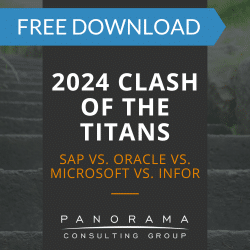Legacy systems continue to play significant roles in many organizations due to their established reliability and deep integration within organizational processes. Considering the strong attachment many organizations have to these systems, it’s crucial to recognize any “unhealthy” tech dependencies your own company may have.
Today, we’re discussing the various types of legacy systems, particularly legacy ERP systems. Keep reading for examples of their continued use and explore the complexities involved in upgrading or replacing them.
Understanding Legacy Systems
Legacy systems are older software and hardware that remain in use within an organization despite the availability of newer technologies. These systems are often retained for their critical role in business operations.
However, they can pose challenges in terms of maintenance, scalability, and integration with modern solutions.
Types of Legacy Systems
- Mainframe Systems are large, powerful computers designed for bulk data processing and enterprise resource planning. They have been a backbone for many large organizations, handling tasks such as transaction processing, batch processing, and database management.
- Client-Server Systems consist of client devices that request services and a central server that provides those services. Popular in the 1980s and 1990s, these systems are still used for various applications, including email, databases, and custom enterprise applications.
- Custom-Built Systems are specifically developed to meet the unique needs of an organization. They can be highly effective but often lack the flexibility and scalability of modern off-the-shelf solutions.
- Legacy ERP Systems integrate various business processes, including finance, HR, manufacturing, and supply chain management. These systems often run on outdated platforms but are deeply embedded in an organization’s operations.
How can you tell when an ERP system has become legacy? One of the most telltale signs is that it no longer receives support from the vendor or software developer. This can lead to security vulnerabilities, excessive maintenance costs, and integration challenges.
The 2024 Top 10 ERP Systems Report
What vendors are considering for your ERP implementation? This list is a helpful starting point.
Legacy ERP System Examples
1. SAP R/3, launched in 1992, was a revolutionary ERP system that supported multiple languages and currencies, making it suitable for global enterprises. It provided integrated modules for various business functions, including finance, sales, and production.
A multinational manufacturing company, for example, might still use SAP R/3 for its production planning and materials management capabilities.
2. Oracle E-Business Suite (EBS) 11i, introduced in 2000, offered comprehensive business applications covering customer relationship management (CRM), supply chain management (SCM), and human resources management (HRM). Known for its flexibility and scalability, it supported complex business environments.
Many businesses still use this system today. For instance, a global telecommunications firm might use Oracle EBS to streamline service delivery across different regions.
3. JD Edwards World, acquired by Oracle in 2003, was known for its strong financial management and manufacturing modules. It was popular among mid-sized companies for its user-friendly interface and robust functionality.
A mid-sized food processing company might still use JD Edwards to manage its financials, procurement, and production schedules.
4. Baan ERP, now part of Infor, was known for its strength in manufacturing and project management. It was widely adopted in industries requiring complex project management capabilities, such as aerospace and defense.
In this industry, a company might rely on Baan ERP to manage intricate project schedules, track component manufacturing, and ensure compliance with industry regulations.
These are just four examples of legacy ERP systems. Many other vendors have made sunsetting announcements in more recent years.
Challenges of Legacy ERP Systems
Despite their widespread use, legacy ERP systems present several challenges that can hinder business growth and efficiency.
1. Maintenance and Support
Legacy systems often require specialized knowledge for maintenance and support, which can be difficult to find as technology advances and experts retire.
These systems are typically built on older technologies and programming languages that are no longer widely taught or used. As a result, finding technicians or IT professionals who possess the skills to manage, troubleshoot, and upgrade these systems becomes increasingly difficult.
The scarcity of expertise can lead to extended downtimes during system failures and higher operational costs due to the specialized skills needed to maintain these systems.
Additionally, as hardware components age, sourcing replacement parts can become problematic, compounding maintenance challenges and potentially leading to prolonged service interruptions.
2. Integration with Modern Technologies
Integrating outdated technology with modern technologies, such as artificial intelligence (AI), can be complex and costly.
Many legacy ERP systems were designed as monolithic architectures with limited flexibility for integration. Bridging the gap between these disparate architectures requires significant customization and middleware solutions, which can be both time-consuming and expensive.
Moreover, the data formats and structures used in legacy systems may not be compatible with newer systems, requiring extensive data transformation and mapping.
These integration challenges can lead to data silos, impeding the flow of information and reducing operational efficiency.
3. Scalability and Flexibility
Legacy systems may not scale easily to accommodate business growth or changing operational requirements. These outdated systems were designed with a specific set of assumptions about the business environment and may lack the flexibility to adapt to new business models, regulatory changes, or market dynamics.
As businesses grow and evolve, their operational needs can outstrip the capabilities of these older systems, leading to performance bottlenecks and inefficiencies.
Additionally, the rigid nature of legacy systems can make it difficult to implement new features or processes without extensive customization.
This lack of scalability and flexibility can hinder an organization’s ability to respond quickly to market opportunities or threats, reducing its overall competitiveness.
4. User Experience
Legacy systems often have outdated user interfaces that are not intuitive, leading to low user adoption and productivity. Many interfaces were designed in an era when user experience (UX) design principles were less advanced, resulting in complex, menu-driven interfaces.
The steep learning curve associated with these systems can lead to user frustration and increased training costs as employees struggle to become proficient with the system.
Additionally, the lack of modern features, such as mobile accessibility, real-time data visualization, and intuitive dashboards, can further detract from the user experience.
As user expectations continue to evolve with the advent of consumer-grade technology experiences, the gap between what legacy systems offer and what users expect becomes increasingly pronounced.
(Learn more about ERP usability.)
Replacing Legacy ERP Systems
Transitioning to one of these solutions requires careful planning and execution. Our ERP software consulting team always tells clients to prioritize the following best practices throughout implementation:
- Assessment and Planning – This involves conducting a thorough assessment of your current systems, identifying pain points, and defining clear objectives. You may also need to develop a cloud migration strategy.
- Data Migration – This means developing a data migration strategy to ensure data integrity and minimize downtime during the transition.
- Change Management – Developing an organizational change management plan can help you mitigate employee resistance and ensure smooth adoption of the new system.
- Process Management – Improving your business processes to align with the capabilities of the new system is vital. We recommend eliminating redundant processes, optimizing workflows, and ensuring alignment with organizational goals.
- Testing and Validation – Conducting extensive testing and validation ensures the new system meets all business requirements and functions as expected.
- Post-Implementation Review – Continuing for at least a year after go-live, you should assess the success of the project and identify areas for improvement. This means gathering feedback, evaluating system performance, and measuring benefits against objectives.
Is Your System Considered Legacy Technology?
Lack of support, compatibility issues, data breaches – these are all signs that you may need to replace your system with more modern applications.
However, transitioning from legacy systems to modern ERP software requires careful planning. By working with an experienced ERP consulting firm, you can navigate the complexities of legacy ERP system transitions and achieve your digital transformation goals.














